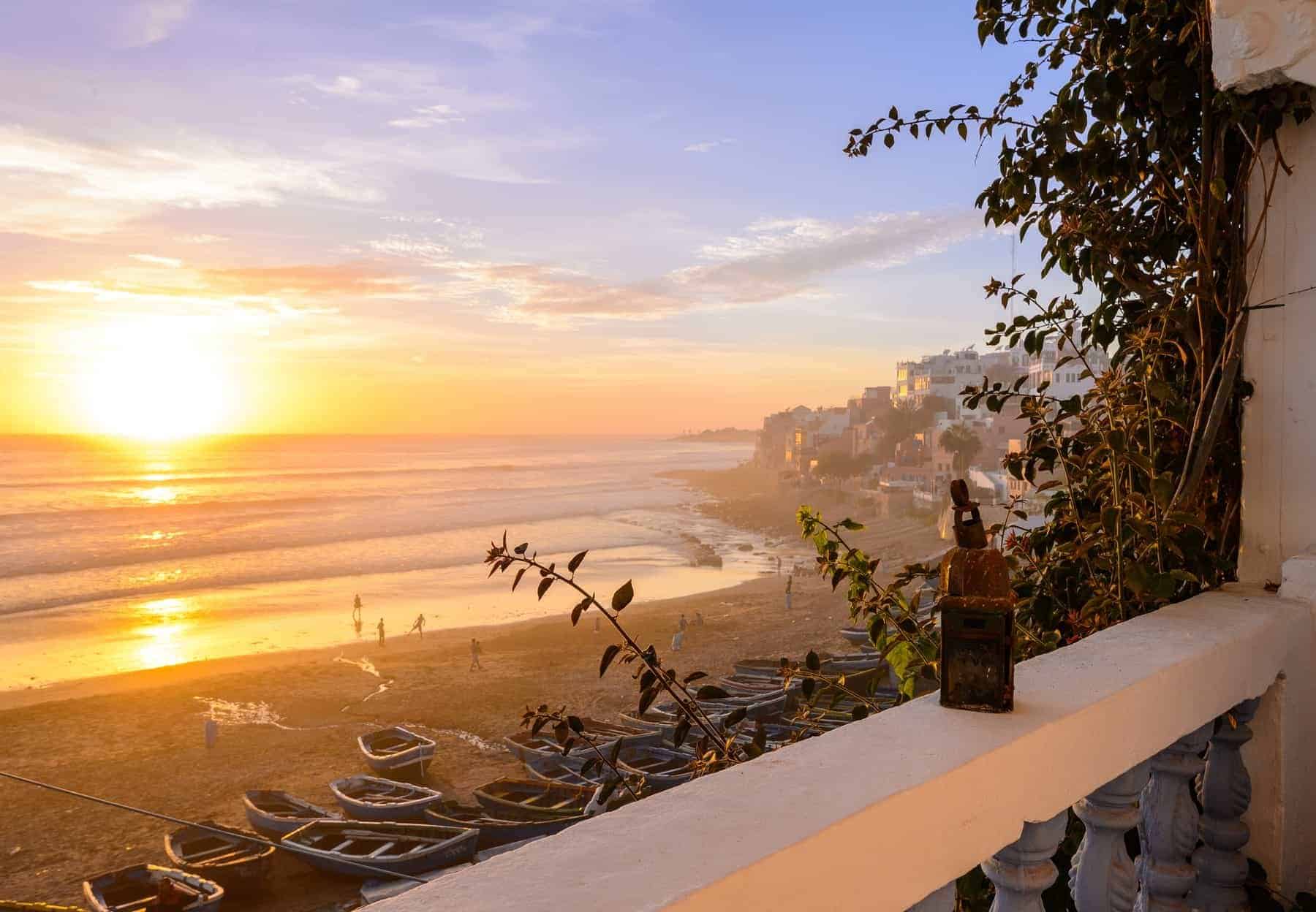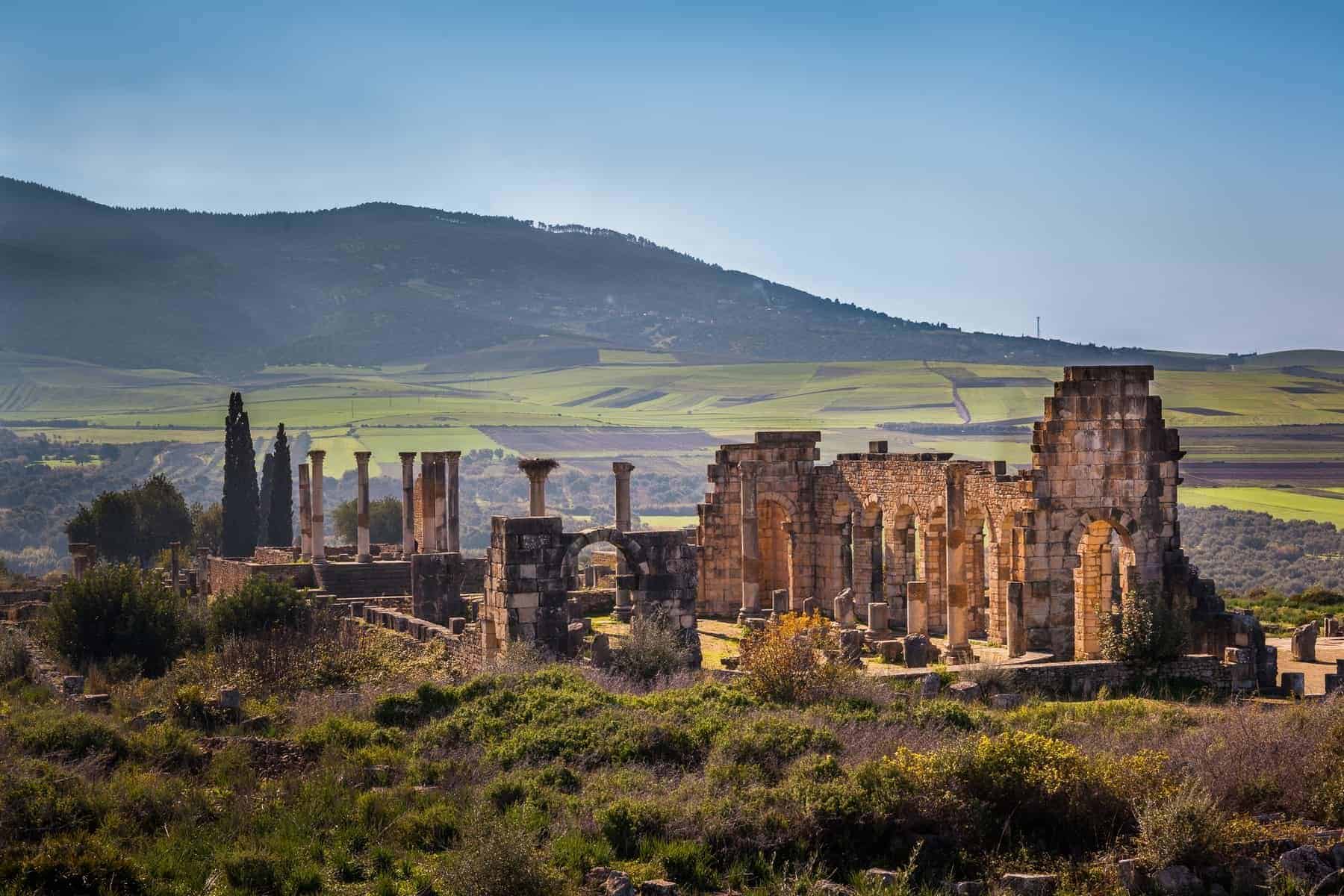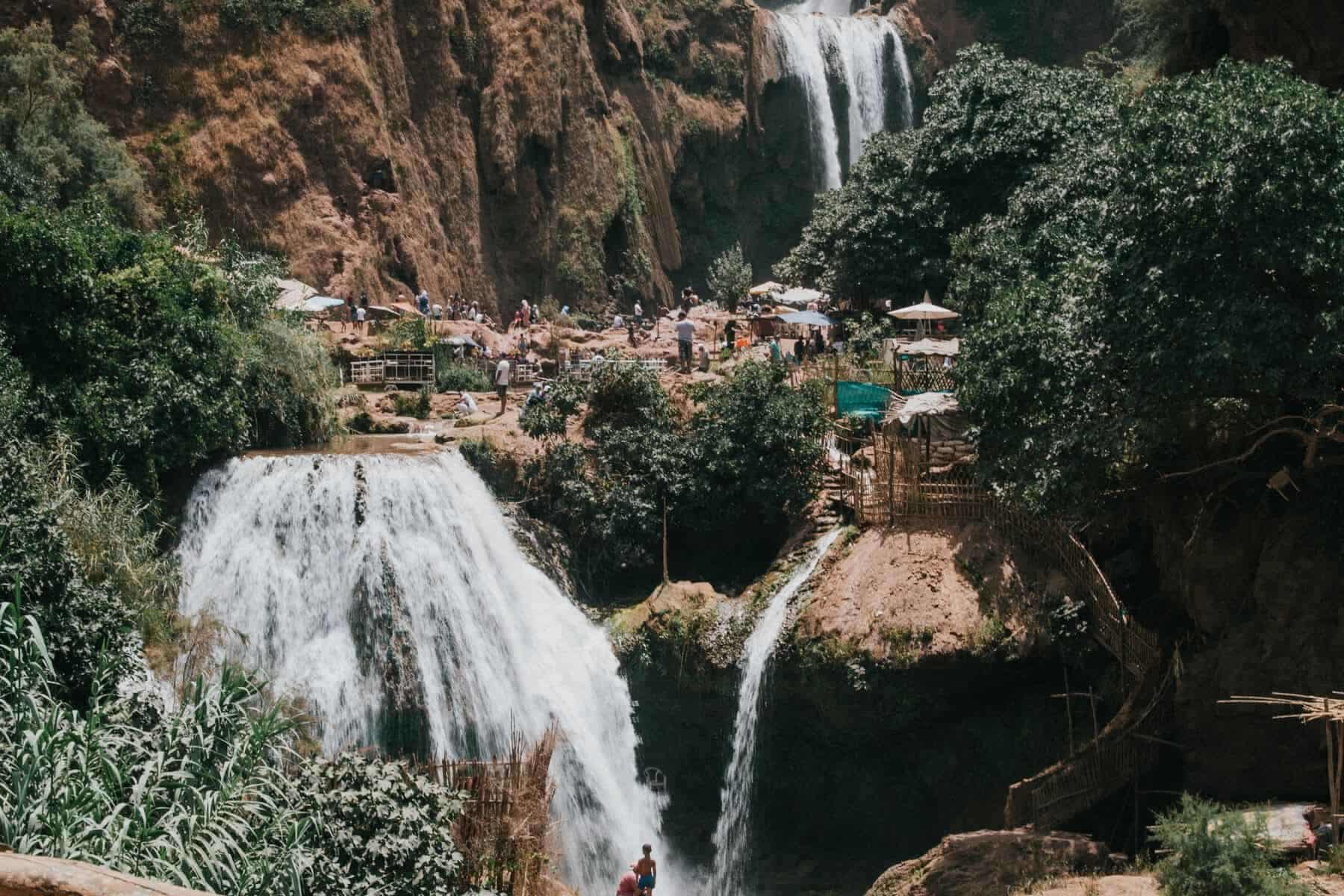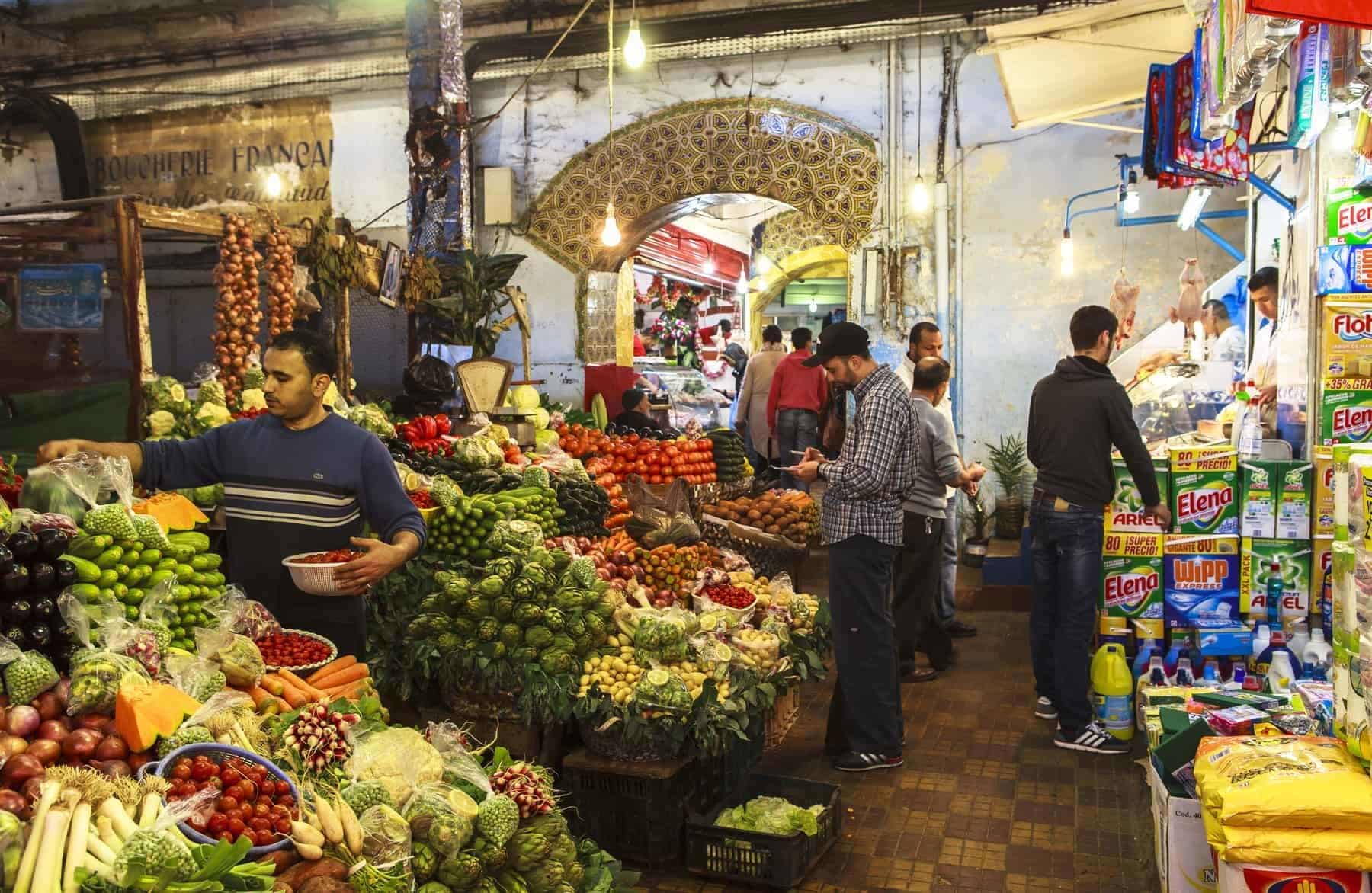Morocco, from the snow-clad Atlas mountains to the blue Atlantic Ocean
Morocco is a wondrous, eyes-open glimpse of the wild and beautiful from snowclad mountains to the blue Atlantic.
It’s an expedition into some of North Africa’s most stunning scenery with the desert on its doorstep and the craggy heights of the Atlas Mountains above. See our Africa Tour video, Morocco is also there.
Morocco is also a ride into a magical, romantic landscape with quaint coastal villages, colorful-painted towns that stick to hillsides and isolated outposts protected by fairytale adobe forts. This interesting state is a fusion of the African and Arab cultures, steeped in ancient traditions. It’s no surprise that artists and writers have been feeding Morocco for decades and that it manages to charm all those who travel.

A sunset view of taghazout surf and fishing village in agadir, morocco
Hassan II Mosque
The main point of attraction and iconic building of Hassan II Casablanca Mosque, the Hassan II Mosque is not only a luxurious icon of the region but also of Morocco itself. This new mosque (completed in 1993) is not half-down doing stuff. It took 10,000 craftsmen to complete the design detail covering each centimeter of the two-hectare gigantic area.

CASABLANCA, MOROCCO – The Wudu wash-room of Hassan II Grand Mosque. The ritual of washing is performed before formal prayer.
Intricately carved marble pieces, vivid mosaics, and zellige tile descriptions all pay tribute to classical Islamic design values and Moroccan craftsmanship expertise while still managing to look modern at the same time.

View of the Basilica, Volubilis, Morocco
Volubilis
This number one Roman ruin of Morocco is a paradise for lovers of antiquity, with a handful of impressive mosaics still unchanged where they were found. Also this site is full of tumbled pillars and ruins of buildings, serving as indications that even the strongest civilizations would finally collapse. The position of the hilltop helps the ruins to rule over the surrounding countryside, contributing to the romantic atmosphere of lost glory. Head up to the Capital and go through the ruins to enjoy the views.
Dades Valley / Gorges Hikers
Trekkers and enthusiasts of general nature should not skip a visit to Morocco’s Dades Valley’s natural landscapes. With the High Atlas ‘ snow-capped mountains in the background, the big-sky nation here is the perfect antidote for those in the middle of Marrakesh and Fes ‘ souks who have been having frazzled nerves. There are quaint dinky villages; excellent chances for bird spotting; good possibilities for day-walking; and views of green fields and orchards caught between the gorge’s orange cliffs, snaking out before you.

Ouzoud Waterfalls, Ouzoud, Morocco, sergio-teixeira
The gorgeous Ouzoud Waterfall
Near the village of Tanaghmeilt, the Ouzoud Waterfall is a nice little place to see in the peaks of the Atlas. If you don’t want to leave the city overnight, you could see the drops on a day trip from Marrakech. Swimming in the drops (due to tides and lack of safety) is not advised, but you are likely to see a few people swimming on the sides.
Moulay Idriss Zerhoun
Nestled at the base of Mount Zerhoun, Moulay Idriss Zerhoun is an important city for locals as well as for Moroccan Muslims. This was the place that the Idrisid dynasty came to power and brought Islam to morocco
There are plenty of biking and walking paths around the town itself that are good early in the morning. You can find picturesque little bakeries inside the town, olive pressing shops and plenty of espresso stops.
Go Camping in the Sahara Desert
Visit these windswept Saharan dunes extending 19 miles and growing to 820 feet for a once-in-a-lifetime experience, dive into the realm of Berber nomads. Choose an overnight trip to sleep in a Bedouin tent in the desert mountains of Erg Chebbi or Erg Chigaga. Stay under the stars and wake up to beautiful sunrises.
Visit a Berber Village
In many respects, life in the mountains and deserts of Morocco for semi-nomadic Berbers is not much easier today than it was for their ancestors. Morocco’s indigenous people take great pride in their way of life and are incredibly hospitable to passing visitors, where you can witness bread being baked in outdoor ovens and the lifestyle of families living close to nature.
Most tour operators are pairing lunch and tea with a Berber community with a one-day trek or a local market trip. Seek Essaouira’s Ecotourism et Randonnées and SheherezadeVentures for the Sahara.

Trek the High Atlas Mountains
The High Atlas is a great getaway from the hustle and bustle of metropolitan Morocco for spectacular views and fresh air. Djebel Toubkal, the highest peak in North Africa, rises to almost 14,000 feet and is just a two-day hike, best done in late summer. Less strenuous yet often satisfying routes through remote Berber villages and steep paths accompany inexperienced hikers with guides. Head to Ourika Valley for a range of outdoor adventure— it’s a reasonably popular place to hang gliding, hiking, or drive mules through secret waterfalls and peaceful hilltop gardens. In recent years, the success of such outdoor pursuits has really exploded in Morocco, providing exciting training camps and excursions by world-class operators.
Find Goats in Trees
Morocco’s Southern Atlantic region is the only area where the argan tree grows, known for its nut oil’s cosmetic and culinary properties. Argan nuts are also a staple of goats, commonly known as’ Berber gold’ for the money the oil has provided to local communities. You’ll see goats in trees along the region’s roads, feasting on the nuts.
Get Pampered at a Hammam
Rubbing and steaming in a local steam room works wonders for the weary. Whether you choose a common public bath or a private room in an upscale spa, this traditional therapy of fast exfoliating and using natural cleansers has promoted physical and mental hygiene and restoration for centuries. Public steam rooms are clean and inexpensive. The Royal Mansour and the Astana Spa in Marrakech are exceptionally luxurious places to live this special cultural ritual. If you opt for the public baths rather than the private luxury option, be aware that cleaning can be abrasive and often rather intimate.
Bab al-Mansour
This gigantic door (which keeps the entrance of the medina in the district of the imperial city of Meknes) is famous for its amazing decoration. Destined to recall in a monumental way the power of the Sultan, Bab al-Mansour is a magnificent relic of the glorious era of Meknes as the capital of Morocco. It is widely regarded as the largest and best-preserved gateway to Morocco.
Arrive late afternoon to photograph the portal in the dim light, then walk through the small labyrinth of a medina of Meknes, a much more casual affair than that of Fez nearby.
Go to photograph the gate in the soft light in the late afternoon, then walk through the narrow labyrinth of a medina by Meknes, which is a much more laid-back affair than neighboring Fes ‘ medina.
Draa Valley
This valley, linking the southeastern end of the High Atlas with the mountains below, is a prime area for fans of architecture and history. The street is bordered by palm tree oases all the way to the city of Zagora and dotted with perfectly preserved mudbrick kasbahs that are interesting to explore.
It’s a great place to go on a road trip, stopping in villages along the way to admire the view and dive into the cool, dimly lit kasbah corridors. Check out, in particular, the Kasbah des Caids in Tamnougalt, which was used as a venue in many Hollywood films, and the village of Timidarte, where the kasbah architecture of the town was beautifully restored.
Blue Town of Chefchaouen
The town of Chefchaouen, situated on the foothills of the Rif Mountains, was built in the 15th century by Spanish exiles and is widely considered one of the most picturesque locations in Morocco. Relax under the lush sunny trees on the cobblestone Plaza Uta el-Hamman and stroll through the steep Andalusian corridors where houses bathed in cobalt and indigo shades merge with terracotta-tiled roofs, pink-scarved people, violet blossoms and ocher-and-poppy-red wool carpets to construct a vibrant color canvas.
Attending a Festival of Moroccan Music and Culture
One of the easiest ways to experience Morocco’s rich heritage is to partake in a local event. Head to Kelaâ M’Gouna in May in the Dadès Valley, home to the largest rose water distillery plant in the world. The flower harvest is celebrated every spring by the remote oasis community. At the World Sacred Music Festival in Fez in early June, experience the harmony, lyricism, and academic fervor of foreign artists, Sufi intellectuals, and social activists. In late June, in the seaside resort village of Essaouira, the festivals of Gnaoua culture, a combination of African and Berber song and dance, are celebrated. Witness the autumn feast of Imilchil Berber’s wedding. The International Film Festival in Marrakech is the best location for international celebrity appearances in December. The all-important Eid al-Fitr (Fast Breaking Festival) shows Moroccan custom at the close of Ramadan with three days of joyful celebration.

Tangier is a major city in northern Morocco with a population of approximately 950,000. It is located on the North African coast at the western entrance to the Strait of Gibraltar where the Mediterranean Sea meets the Atlantic Ocean off Cape Spartel. It is the capital of the Tangier-Tetouan Region and of the Tangier-Asilah prefecture of Morocco.
Best places to stay -Romance and Luxury
The Ksar Char Bagh, a Moorish Palace with peaceful gardens and a huge outdoor bath, is just as romantic and ideal for honeymoons.
The French-owned Villa des Orangers has spacious rooms for good pampering and a luxury hammam to pamper you.
The Riad El Fenn is another great destination for a relaxing hammam experience where you can also enjoy food produced in the own garden of the riad, open fires and warm baths with calming oils.
Les Cinq Djellabas is a camp of ten African eco lodges that promise the perfect place to relax away from the medina’s noise. The impression is comfort barefoot-where modern industrial architecture seamlessly mixes with traditional Moroccan craftsmanship. Extremely personal and very private.
The Riad Al Moussika is cozy and friendly, with just five suites, courtyards filled with sunshine and a tasty Italian / French / Moroccan bar. The decor is traditional Moroccan around a circular courtyard with a spa, rose-filled fountains and bougainvillea.
Best spas in Hamman
The Riad Kaiss was once a harem, so it’s a great place to live with a bit of history in your quest for adventure! With many of the most exquisite original features still in place, including some stunning tiling and latticework, it has been very elegantly transformed. the main courtyard is a soothing green space ideal for relaxing after hammam or you can pay for a poolside massage.
Not all dars and riads are in the city center and Dar Ayniwen is a stunning, spacious example. This dar has space for a large outdoor pool and giant tiled baths on five green acres in the Palmeraie zone-some of the suites even have their own jacuzzi. There is space for one of the most indulgent hammams in Marrakech, as you can picture from all these watery relaxing help.
Riad Farnatchi has one in creamy white marble surrounded by candles if you’d rather have a more traditional-looking hammam. The friendly pool has some nicely detailed tiling. You are assured of personalized service with only five suites in this luxury hotel. The massages is a clearly’ knock out.’
Modern outlook
The Riad Joya has recently been renovated and is beautifully unfussy with natural materials that are used in a cleaner, more modern way. For new furnishings, the rooms and courtyards are vibrant and colorful and the service standards are high.
The Villa des Oranges is an insightful six-room hotel with a combination of Moroccan and European design. Dream of stunning mosaic floors and panel walls of stone. In this frenetic environment there is a luxury hammam and a peaceful internal garden Maison MK is a calming refuge. Neutral colors, a beautiful harman, a spacious rooftop terrace and an elegant Moroccan / French fusion restaurant with just six spaces. A fashion photographer developed the model so it’s also quite trendy, but still conventional.
In the Palmeraie, Villa 55 provides a little more room and a little quieter. Just ten spaces are simple and trendy with predominantly white furniture and Moroccan paint splashes. A beautiful garden and a traditional kitchen are part of its attraction.
If you love food
Dar Les Cigognes is another great choice when you love food. It has earlier won Best Cooking School accolade in Morocco and since 2001 has been instructing tourists. From the rooftop terrace, you will also notice beautifully decorated rooms and breathtaking views of the city.
La Maison Arabe, built in the 1940s, was the most spoken about restaurant in Marrakech in its heyday-and then converted into a luxury hotel in 1997. The tone is perfectly set by the sound of lanterns and classical music. You will fall in love with the menu-with plenty of popular choices including some of the city’s best tagines.
The Jardins d’Issil should be booked for romance-seeking wine. A series of 15 caïdal tents set up around a large central pool like mini marquees. You can also dine around the beach, under an auditorium, or go in a restaurant for something more formal.
If you want to have a good meal and rest, come to Dar Ayniwen. This stunning paradise is only a short drive from the city center but within five acres of lush gardens, it feels like your own natural peaceful oasis. They also sell hotel guests, free cooking classes.
Tours to Morocco and the Africa Continent
Travel to Africa:
- Angola
- Botswana
- Cap Verde
- Egypt
- Ethiopia
- Kenya
- Madagascar
- Morocco
- Mauritius
- Namibia
- Seychelles
- South Africa
- Tanzania
- Tunisia
- Uganda
- Zambia
- African top Safaris in 5 countries




